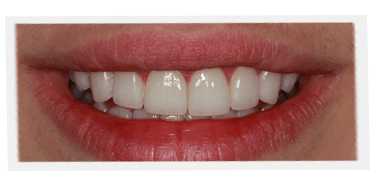
Solving Common Smile Problems: Bite Problems
Bite problems are very common in dentistry. Many, if not most people, have some sort of relative issue with bite problems. There are five main bite problems that relate to smile problems: buck teeth, a prognathic bite, a collapsed bite, a narrow palate, and abfraction. Here, we go into each with more detail. (Taken from my book, A Guide to the Perfect Smile.)
Buck Teeth
In this bite problem, the top front teeth stick out too far. Dentists call this a class 2 occlusion. They solve this problem by grinding away the excess tooth and positioning crowns or veneers over the teeth to move them back to a straighter, more flush alignment with the lip.
Prognathic Bite
In this condition, the lower jaw sticks out too far. Dentists call this a class 3 bite. It can be solved by essentially veneering the lower teeth backward. Most often, both upper and lower teeth are veneered or crowned and thereby the upper teeth are moved forward, complementing the lower jaw and giving the appearance of properly positioned upper and lower jaws.
Collapsed Bite
In this condition the teeth, over the years, have worn down and essentially into each other. This decreases the distance between the tip of the nose and chin, which creates an aged look. The teeth are generally too short and appear worn. They are susceptible to fractures. By crowning, bridging, or veneering the teeth, the dentist can restore the height of the patient’s bite, increasing the vertical dimension to give the patient a more youthful appearance.
Narrow Palate
People with a narrow palate generally show their front teeth only, giving than a rather rabbit look. The palate may be vaulted as well, in which case an orthodontic appliance can be used to expand the arch. As an alternative, the back teeth can be crowned or veneered and built out to create a fuller arch for the teeth to fit into, thereby establishing a pleasing smile.
Abfraction
Some people notice wedge-shaped areas at their gum line where their fingernail or toothbrush can fit. As these spots the tooth seems to be worn out at the gum line. They often assume, or are told by their dentist, that this is the result of brushing too hard. But in fact it is usually the result of trauma caused by the way they bite down on their teeth. It is a mechanical problem in terms of how the teeth are hitting each other. The pounding of the teeth send pressure down on the tooth, causing a problem at the weakest point, where the enamel is thinnest. The solution is to bond, veneer, or place crowns on the edges of the teeth, reestablishing a proper bite.
Edward S. Philips, D.D.S.



